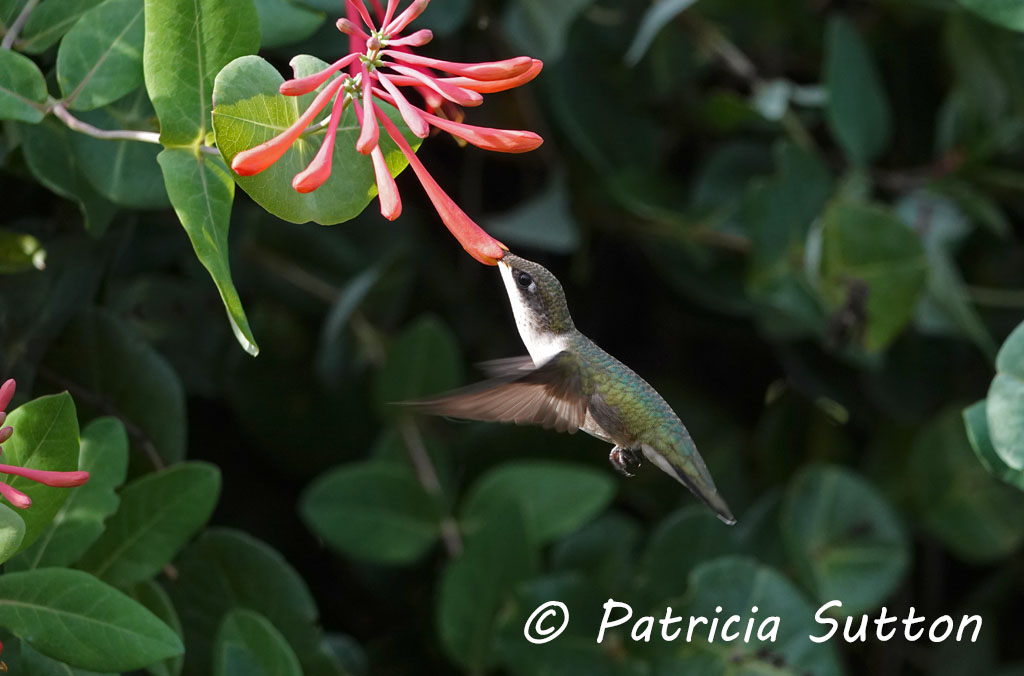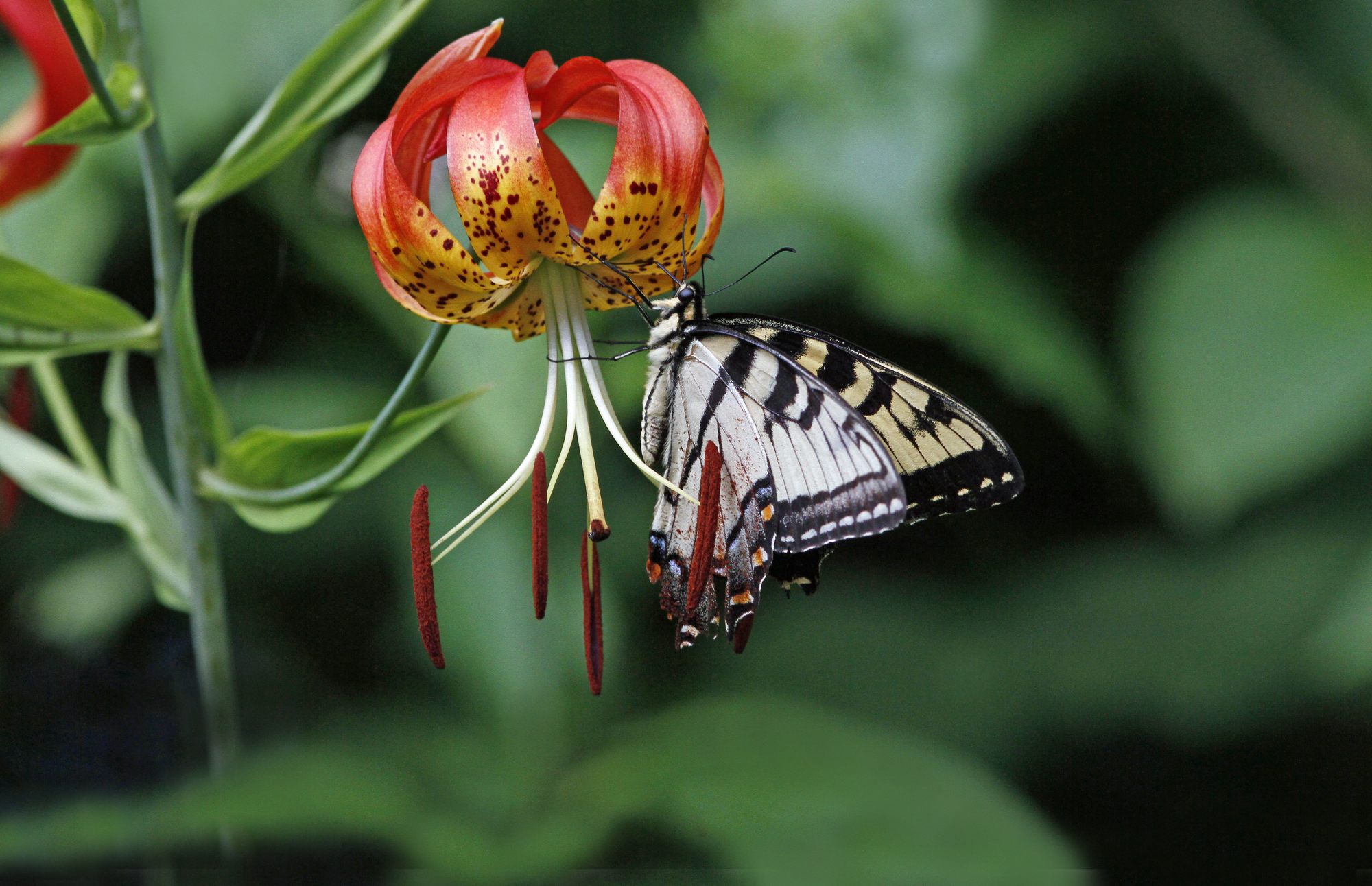
Hi Gang,
Ruby-throated Hummingbirds are migrating north! There was a real HIT of them yesterday, Monday, April 15, 2024, when many reported seeing the first ones in their Cape May County, NJ, yards. I was away and got home late in the day. You can bet that one of my first tasks this morning was to make hummingbird solution, fill a few feeders, and place them where they could easily be seen from inside the house.
You can monitor Ruby-throated Hummingbird migration north (AND enter your own sightings) on the 2024 Hummingbird Central map and on the Journey North map. When you go to each of these sites, be sure to set the date for these migration maps to 2024.
Ruby-throated Hummingbirds have been surging north from their wintering grounds (northern Panama and Costa Rica, north to southern Mexico) since mid-February and March. They will steadily move north with each good migration weather day, the opening of important nectar plants, and warm enough days with insect life.
Native nectar sources that I planted for hummingbirds and other pollinators are about to bloom: Coral Honeysuckle, Wild Columbine, and Red Buckeye to name a few.
Why Feeders?
You might wonder why I recommend putting out a hummingbird feeder, which is obviously an artificial nectar source. When hummingbirds arrive, my garden is still dirt! Without well-maintained feeders, “on-the-move” Ruby-throated Hummingbirds will keep going. Nothing much is in bloom.
Why More Than 1 Feeder?
In spring I hang 6-8 feeders scattered around our yard, so that returning males (they migrate first) can’t take control of our whole yard. I want females to settle in too and consider nesting in our yard. I’ll space the feeders out. I put one feeder on each end of my front porch (and enjoy them from the front porch rockers). I hang one from a shepherd’s hook on our back porch, easily viewed from the kitchen and sunroom. I hang one from the arbor into our perennial garden. I hang one from a tree limb at the back of our garden. And I hang one at the back of our woods. This way females will have options, places to set up their own territory and nest in our yard, away from bossy, territorial males (who DO NOT share, even with females they’ve mated with). When activity picks up I add two more, one outside my office window and one outside our screened porch.
The Proper Solution for a Hummingbird Feeder
The solution I use (that is most like nectar) is 1 part sugar and 4 parts water. I make a quart at a time and refrigerate what’s left. I’ll only put two ounces into each feeder in the spring (and in late fall) because use is light and the last thing any of us want to do is waste sugar water (sugar cane fields are gobbling up important habitat). I mark my calendar so that each week, like clockwork, I empty and clean the feeders with hot soapy water, then rinse them with boiling water, and then put in 2 ounces of fresh solution (when temperatures heat up, I clean the feeders every 3 days). NO red dye is necessary; the feeders have enough bright red parts to attract hummers and red dye is cancer causing (and outlawed in many countries). Hummingbirds have long tongues and can easily reach the 2 ounces of solution. I don’t fill the feeders with more solution until activity gets crazy and that doesn’t happen until young are on the wing and during migration when so many birds are tanking up and moving through our habitat.
Keep an eye on Journey North’s Ruby-throated Hummingbird MAP and on Hummingbird Central’s MAP to see their movement north so you are ready for them.
The site I recommended for 23 years, Hummingbirds.Net, is still available. On this site you can view 23 years of spring migration maps (1996-2018) for Ruby-throated Hummingbirds, but there have been no LIVE maps since 2018. The creator of this great website is no longer able to maintain it because of technical (and expensive) changes (his explanation can be read at the top of the page HERE).
If you are a new wildlife gardener, be sure to also provide:
- a pesticide-free property (since hummingbirds also feast on soft-bodied insects and spiders)
- a habitat filled with native perennials, trees, shrubs, and vines that provide nectar attractive to hummingbirds from spring thru fall!
Some Sources of Native Plants in 2023
A number of native plant sales and reputable nurseries are gearing up for 2024. Be sure to support them. Here is my post: “Some Sources of Native Plants: 2023“.
All About Ruby-Throated Hummingbirds
To read more about Ruby-throated Hummingbirds check out my additional post below. You may also want to print my Ruby-throated Hummingbird Fact Sheet (the reverse side covers Hummingbird Feeder maintenance and gardening for hummingbird info).
Ruby-throated Hummingbirds – Part One: They’re Back
- my favorite hummingbird feeder (nature centers sell them, as does Amazon)
- spring nectar plants that have worked for me in the Mid-Atlantic Region to lure hummingbirds to settle in and nest in your yard.
Ruby-throated Hummingbirds – Part Two: Summer Nectar – COMING SOON:
- summer nectar for the Mid-Atlantic Region including many natives and a few non-natives (that are not problematic).
- proper feeder maintenance during the heat of summer
- the importance of insects
- places to bathe
Happy Wildlife Gardening, Pat

Pat,
Thank you for taking the time to give us so much wonderful information. We live in Bergen County and we’ll always get hummingbirds come August into as late of the beginning of October as they wend their way back south.
We have seen hummers here on our neighbors azaleas once, so maybe we’ll try again this spring using your suggestions. P.S. We have fond memories of your nature walked!
Hi Joan & Bert,
I too have fond memories of many walks and wildlife garden tours with you both. I wish you luck attracting hummingbirds to your habitat this spring. They bring me such joy spring through late fall. Winter is a quiet stretch without them. I haven’t seen one yet, but then I’ve been tied to my desk all day. Happy Spring to you both! Pat
Hi Gang, Clay & I just had our 1st hummingbird of the spring at 5:04 p.m. (on 4-16-24)!